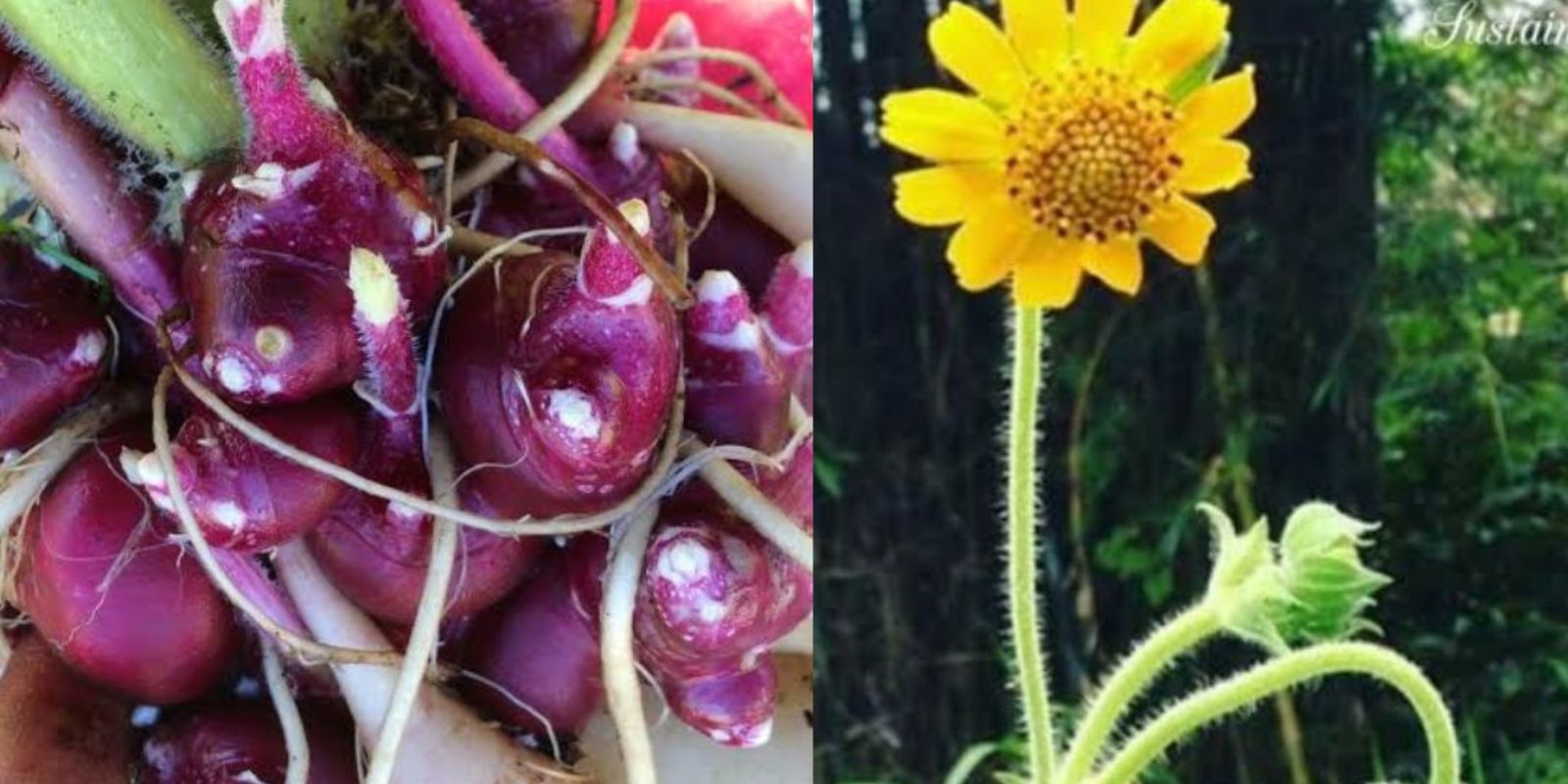Yacon (Smallanthus sonchifolius) is a unique and versatile tuber native to the Andes. Known for its sweet, crisp flavor, it’s often referred to as the “apple of the earth.” Yacon is a fantastic addition to any garden, offering both edible roots and beautiful foliage. Its ease of cultivation and minimal maintenance make it a favorite among both beginner and experienced gardeners. In this article, we’ll explore everything you need to know about growing yacon root—from planting to harvest—so you can enjoy this delicious crop right in your backyard.
Why Grow Yacon?
Yacon is more than just a tasty root vegetable. It has numerous benefits:
- Nutritional Value: Yacon is low in calories and high in prebiotic fiber, which promotes gut health.
- Versatile Uses: The tubers can be eaten raw, cooked, or juiced, while the leaves can be used for tea.
- Low Maintenance: Once planted, yacon requires minimal care and thrives in various climates.
- Storage-Friendly: The harvested tubers store well, allowing you to enjoy them for months.
Preparing to Plant Yacon
- Choose Your Yacon Variety:
- Yacon is available in several varieties, with differences in root size, color, and sweetness. Choose a variety that suits your preference and growing conditions.
- Obtain Healthy Rhizomes:
- Yacon is grown from rhizomes (the crown section) rather than seeds. Purchase certified disease-free rhizomes from a trusted supplier or source them from another gardener.
- Find the Right Location:
- Yacon thrives in full sun and well-draining soil.
- While it prefers warmer climates, it can adapt to cooler regions with a long frost-free growing season.
- Prepare the Soil:
- Yacon prefers slightly acidic to neutral soil (pH 5.5–7.0).
- Enrich the soil with compost or well-rotted manure to provide the nutrients yacon needs to grow large, sweet tubers.
Planting Yacon
- Timing Matters:
- Plant yacon rhizomes in spring, after the last frost. The soil temperature should be consistently warm for optimal growth.
- Planting Depth and Spacing:
- Dig holes about 3 inches deep and plant the rhizomes with the buds (growing points) facing up.
- Space plants 2–3 feet apart, as yacon grows into large, bushy plants.
- Water Thoroughly:
- After planting, water the rhizomes well to help them establish roots.
Caring for Your Yacon Plants
- Watering:
- Keep the soil evenly moist, but avoid waterlogging. Yacon is relatively drought-tolerant but performs best with consistent watering.
- Mulching:
- Apply a layer of organic mulch around the plants to retain moisture, suppress weeds, and regulate soil temperature.
- Fertilizing:
- Feed the plants with a balanced organic fertilizer or compost once during the growing season to boost growth.
- Weed Control:
- Regularly remove weeds around your yacon plants to prevent competition for nutrients and water.
- Support if Needed:
- In windy areas, consider staking the plants, as they can grow up to 6 feet tall and may topple over.
When and How to Harvest Yacon
- Recognizing Harvest Time:
- Yacon is ready to harvest in late fall when the foliage turns yellow and begins to die back, usually after about 6–8 months of growth.
- Harvesting the Tubers:
- Carefully dig up the plants to avoid damaging the tubers. Use a spade or fork to lift the plant from the soil.
- Separate the tubers (edible roots) from the rhizomes (used for replanting).
- Storing the Tubers:
- Store yacon tubers in a cool, dark place for up to several months. Their sweetness increases after a few weeks of curing.
- Preparing for Next Season:
- Save the rhizomes for replanting in the spring. Store them in slightly damp sand or sawdust in a cool, frost-free location.
Common Challenges and Solutions
- Pests:
- Yacon is relatively pest-resistant, but slugs and snails may occasionally attack young plants. Use organic pest control methods if necessary.
- Diseases:
- Poor drainage can lead to root rot. Ensure your soil is well-draining and avoid overwatering.
- Frost Damage:
- Yacon is sensitive to frost. Protect the plants with a row cover or harvest them before the first frost.
Enjoying Your Yacon Harvest
- Raw:
- Peel and slice the tubers for a refreshing, apple-like snack.
- Cooked:
- Use yacon in stir-fries, soups, or baked dishes for a sweet, nutty flavor.
- Juiced:
- Extract the juice for a natural sweetener or healthy beverage.
- Tea:
- Dry the leaves and use them to make a calming herbal tea.
Why Yacon is a Must-Try Crop
Yacon offers a rewarding gardening experience with minimal effort. Its dual-purpose nature—edible tubers and reusable rhizomes—makes it an economical and sustainable choice for home gardeners. With its sweet taste, health benefits, and versatility in the kitchen, yacon is a crop you’ll want to grow year after year.
Call to Action
Have you ever tried growing yacon root? Share your experiences or questions in the comments below! Let’s swap tips and tricks for cultivating this amazing tuber.
#GrowYacon #SweetHarvest #EasyGardening #TubersOfJoy #SustainableGardening #HealthyEating #GardeningLife

